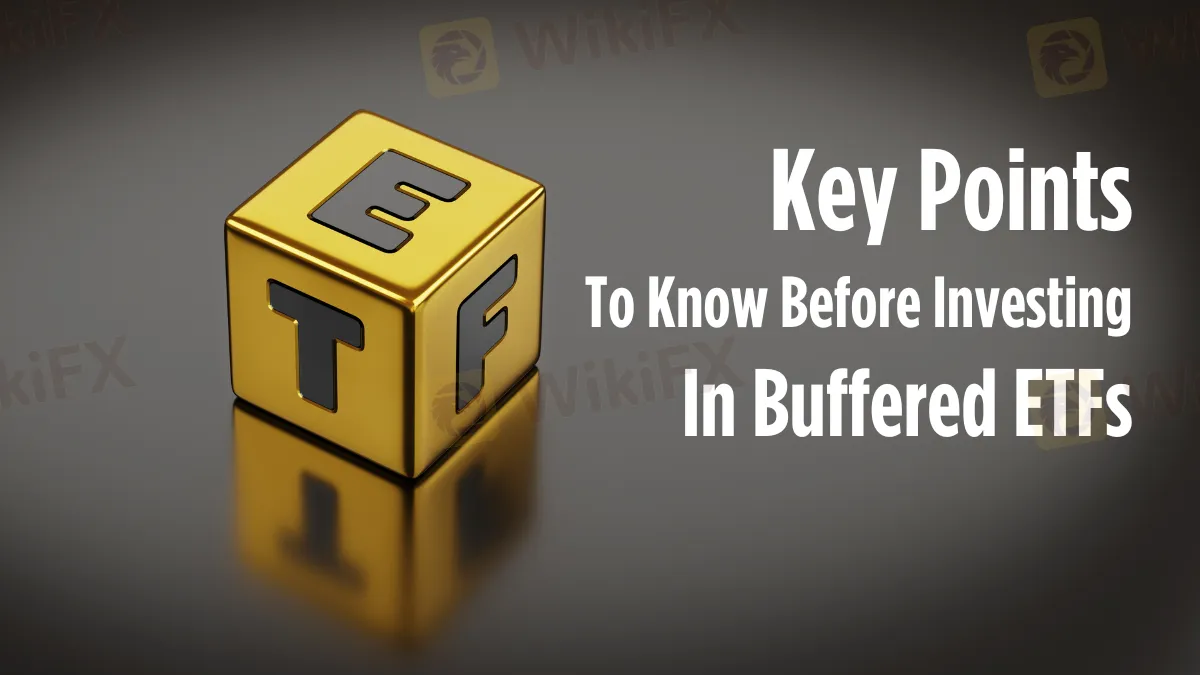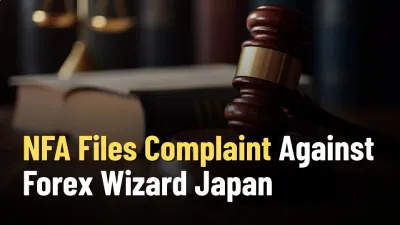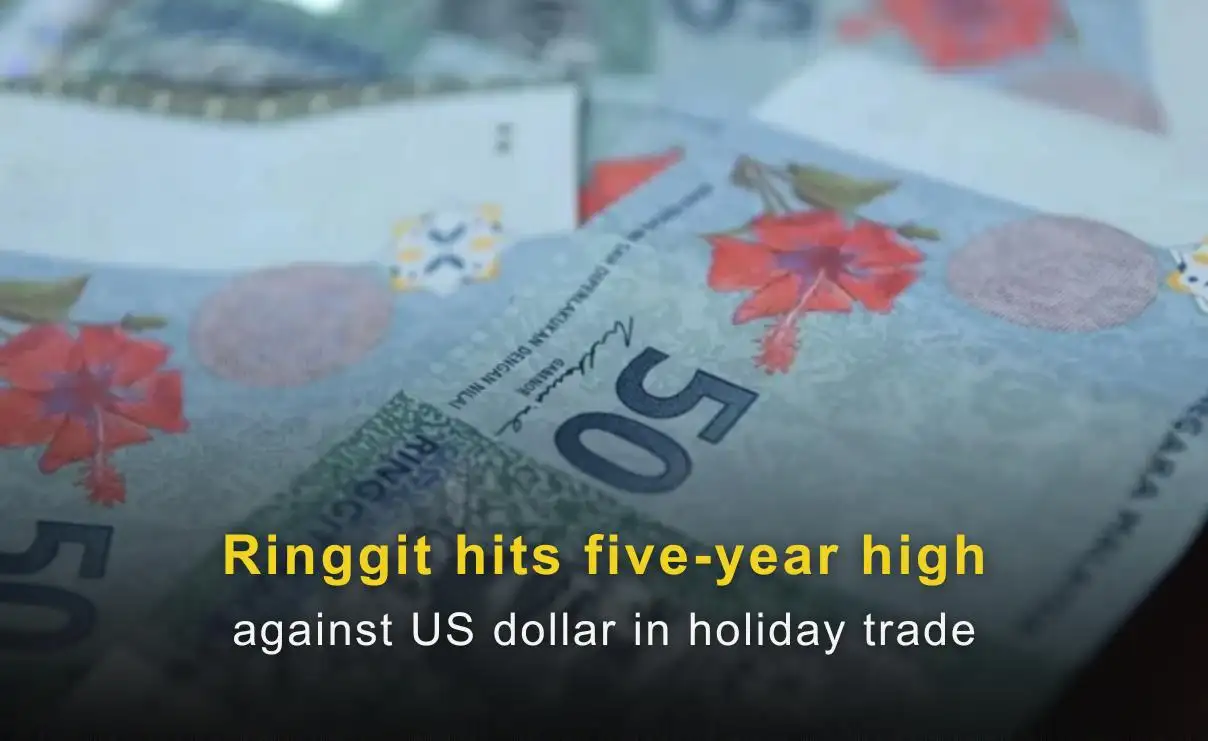Key Points to Know Before Investing in Buffered ETFs
Abstract:Learn the essential details about Buffered ETFs, a strategic tool offering market downside protection with upside potential in today's volatile financial landscape.

In today‘s rapidly shifting financial environment, market volatility concerns many investors. One solution gaining traction is Buffered ETFs (Exchange-Traded Funds). These investment vehicles offer downside protection while still allowing participation in market gains, making them an increasingly popular option for those seeking to hedge against potential losses. Here’s what you need to know before investing in Buffered ETFs.
What Are Buffered ETFs?
Buffered ETFs are exchange-traded funds that incorporate a protective buffer against market declines. In simple terms, they allow investors to limit their losses when the market drops while still giving them an opportunity to participate in gains. This balance between protection and growth appeals to those looking for more security in their investments without entirely forgoing market exposure.
The concept behind Buffered ETFs is to provide a pre-set level of protection on the downside, often through options contracts, while capping potential gains on the upside. For example, one of the popular Buffered ETFs from Innovator ETFs, under the ticker PAUG, offers 15% downside protection, meaning that the first 15% of losses are buffered. At the same time, investors can still benefit from a 12.8% upside.
Why Consider Buffered ETFs?
For many investors, the appeal of Buffered ETFs lies in their ability to manage risk in an unpredictable market. Bruce Bond, CEO of Innovator ETFs, highlights this unique feature, noting that Buffered ETFs fit well for investors seeking market exposure without taking on the full risks associated with it. With monthly issues of new Buffered ETFs, investors can align their investments with specific market conditions.
Bond recommends holding onto these ETFs for the entire year as they are built around one-year options. “At the end of the year, the options are fully valued, and then we reset it for the following year,” Bond explains. This reset provides investors with a structured timeline for their investments, allowing them to manage their expectations and plan accordingly.
Skepticism Around Buffered ETFs
Despite their growing popularity, only some are convinced that Buffered ETFs are the best solution. Mark Higgins, Senior Vice President of Index Fund Advisors, expresses caution over these strategies. He argues that some investors might be creating expensive solutions for what could be a simpler problem – dealing with market volatility.
Higgins believes there are more cost-effective ways to navigate uncertainty, such as staying disciplined with long-term investment strategies and consulting with a financial advisor rather than making drastic moves out of fear. According to Higgins, advisors who maintain a calm approach can help investors manage their emotions during turbulent times without the need for complex strategies like Buffered ETFs.
Why Are Buffered ETFs Growing in Popularity?
Buffered ETFs have seen a remarkable surge in interest recently. As of the latest figures, these funds have accumulated around $45 billion in assets under management, with much of that growth occurring in the past year. Several factors contribute to the rise of Buffered ETFs, including market volatility, interest rates, and implied dividends.
- Volatility: Market volatility, or the expectation of future price movements, plays a crucial role in the pricing of Buffered ETFs. When volatility is high, the upside cap (the limit on potential gains) tends to increase, offering investors a more attractive opportunity for growth.
- Interest Rates: Changes in interest rates also influence the pricing and performance of these funds. Higher interest rates generally mean higher premiums from selling call options, which translates to a higher upside cap. Conversely, as interest rates rise, the cost-effectiveness of the downside protection increases.
- Implied Dividends: The dividends factored into the pricing of the underlying assets affect the performance of Buffered ETFs. By considering implied dividends, these strategies often provide more tax-efficient returns than traditional dividend-paying stocks.

The Mechanics Behind Buffered ETFs
Buffered ETFs achieve their protective features through a series of options contracts. These contracts are carefully structured to create a buffer against losses while limiting gains. The process often involves a combination of buying and selling options that set both the downside protection and the upside cap.
This complex arrangement allows investors to customize their risk exposure based on their financial goals. Some investors prefer short-term protection, while others might be looking for long-term growth with a safety net in place. The flexibility offered by Buffered ETFs makes them a versatile tool for different market conditions.
The Role of Buffered ETFs in Risk Management
Buffered ETFs are increasingly becoming a part of diversified portfolios, especially in times of market uncertainty. In inflationary environments, where both stocks and bonds can experience declines, these ETFs provide a way to manage risk without abandoning growth opportunities altogether. They allow investors to stay in the market, mitigating the fear of missing out on gains while protecting against significant losses.
In addition to offering downside protection, Buffered ETFs help investors safeguard their existing gains. As equity markets reach all-time highs, many are concerned about potential downturns. Buffered strategies reduce a portfolios exposure to market swings or equity beta while still enabling participation in future growth.
Are Buffered ETFs Right for You?
Investing in Buffered ETFs is not a one-size-fits-all solution. These funds are best suited for investors who want to balance risk and reward. They provide a structured approach to managing downside risk while still allowing for some market participation, making them appealing in volatile markets.
However, its essential to consider the costs associated with Buffered ETFs. While they offer protection, the cap on potential gains means that investors might miss out on significant market rallies. Additionally, some experts argue that more straightforward strategies could be just as effective in managing risk without the added complexity and expense.
Final Thoughts
Buffered ETFs are a powerful tool for investors who seek protection against market declines while still wanting to benefit from upside potential. As market volatility continues to dominate the financial landscape, these ETFs offer a way to manage risk without stepping entirely away from growth opportunities.
Financial professionals can incorporate Buffered ETFs into investment plans by understanding the key factors that influence their pricing and performance. Whether you are a conservative investor looking for protection or someone trying to navigate today's complex markets, Buffered ETFs might offer a balanced approach to your investment strategy.
Before diving in, evaluating your financial goals, risk tolerance, and market outlook is crucial. Consulting with a financial advisor can help determine whether Buffered ETFs align with your investment strategy. As always, careful consideration and planning can go a long way in ensuring long-term success.
Related news:
Stay informed about Buffered ETFs and their role in managing market risk. Visit WikiFX News for the latest updates and insights on this and other financial strategies.

Read more

Geopolitical Risk: Israel Sets New "Missile Red Line" for Iran
Global markets are on alert for potential supply-side shocks in energy markets as tensions between Israel and Iran escalate significantly. Israeli officials have signaled a lower threshold for preemptive military action, shifting their "red line" from nuclear development to the reconstitution of Iran’s conventional ballistic missile arsenal.

NFA Files Complaint Against Forex Wizard Japan
NFA charges Forex Wizard Inc. and Mitsuaki Kataoka with undisclosed forex pool operations, delayed withdrawals, and misleading regulatory claims.

Ringgit hits five-year high against US dollar in holiday trade
The Malaysian ringgit extended its rally, reaching a five-year high against the US dollar, trading in a narrow range of RM4.04-RM4.05.

Pictet Broker Review: Is Pictet Legit or a Scam?
When evaluating financial service providers, trust, regulation, and transparency are key. In this review, we examine Pictet — a well-known Swiss financial institution — and assess whether it is legitimate or a scam, highlight its core services, and compare it with other brokers in the market.
WikiFX Broker
Latest News
Spring Rally in Chinese Equities Signals Potential Lift for AUS and NZD
China’s Export Resilience: A Structural Pivot Towards the 'Global South'
Silver Smashes $70: Is the "Forced Central Bank Buying" Thesis Playing Out?
JPY Forecast: Japan Raises Debt Cost Assumption to 30-Year High
Copper Smashes $12,000 Barrier in Commodity Super-Cycle Surge
Trump Intensifies Fed Pressure as Strong GDP Complicates Rate Cut Path
Credit Suisse Hit With $7.1M Fine Over Supervisory Failures
Brokers or Prop Firms, or both...
Trading.com Launches Zero-Commission Investment Account
Quotex Review 2025: Safety, Features, and Reliability
Rate Calc


